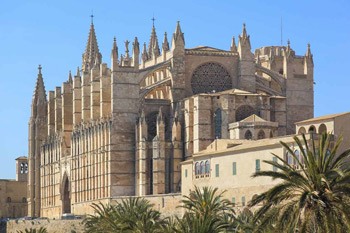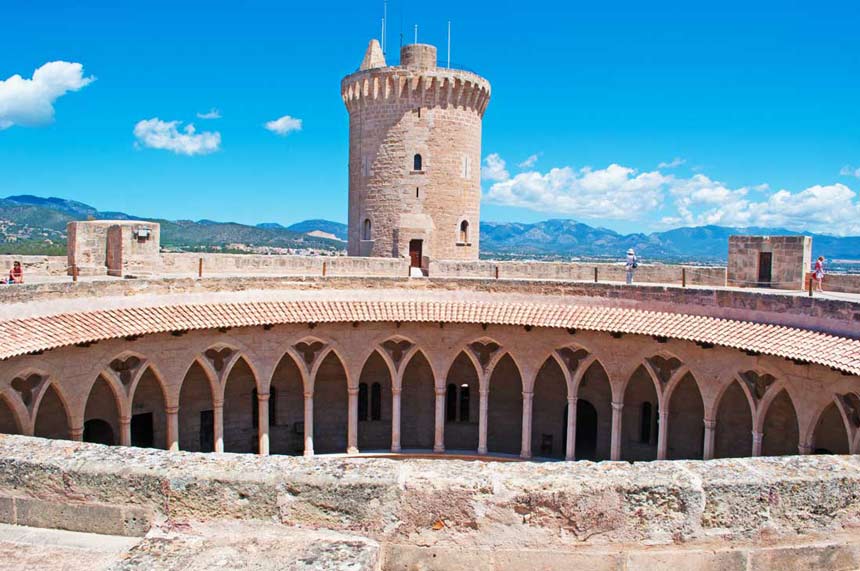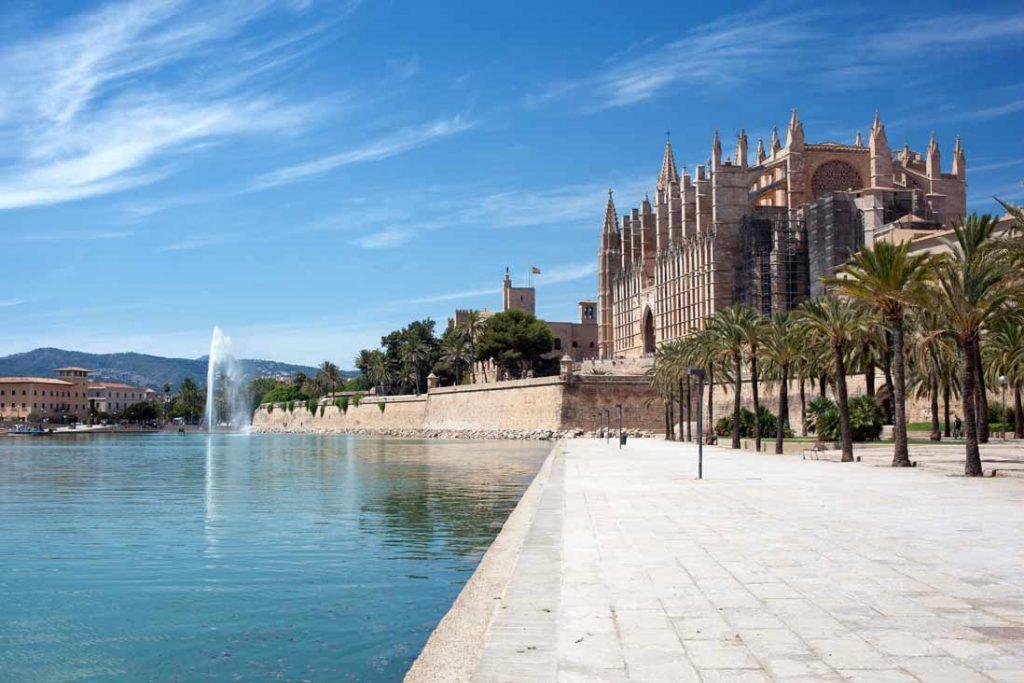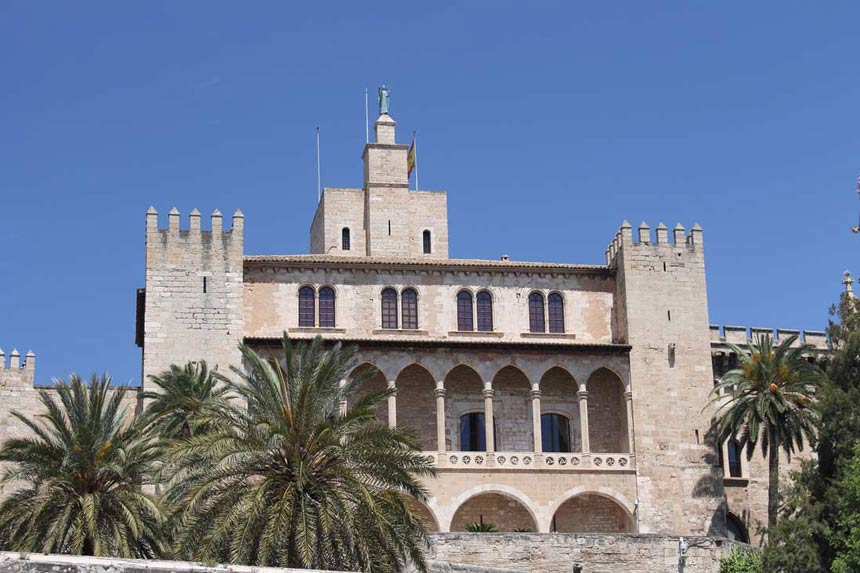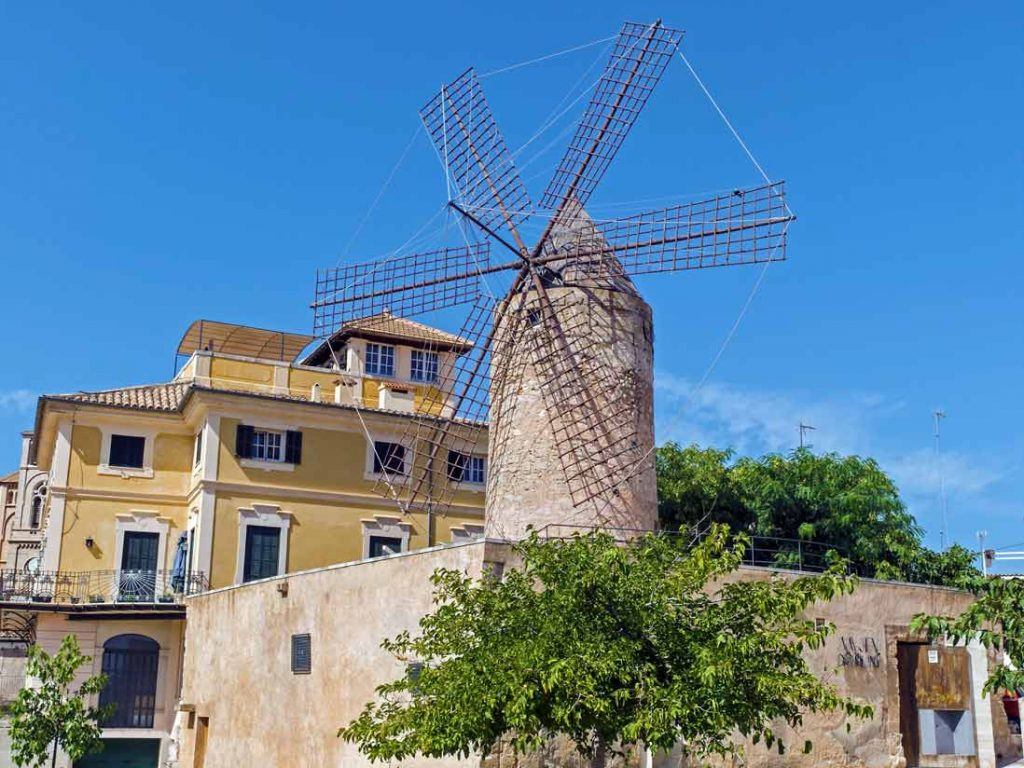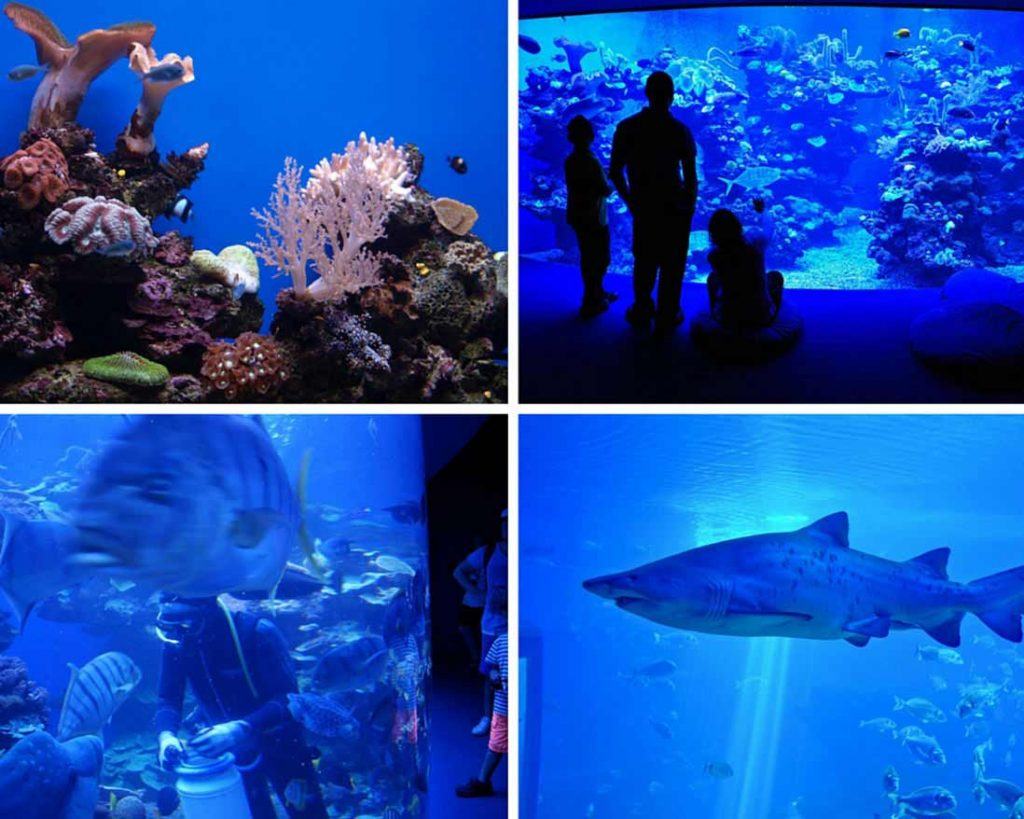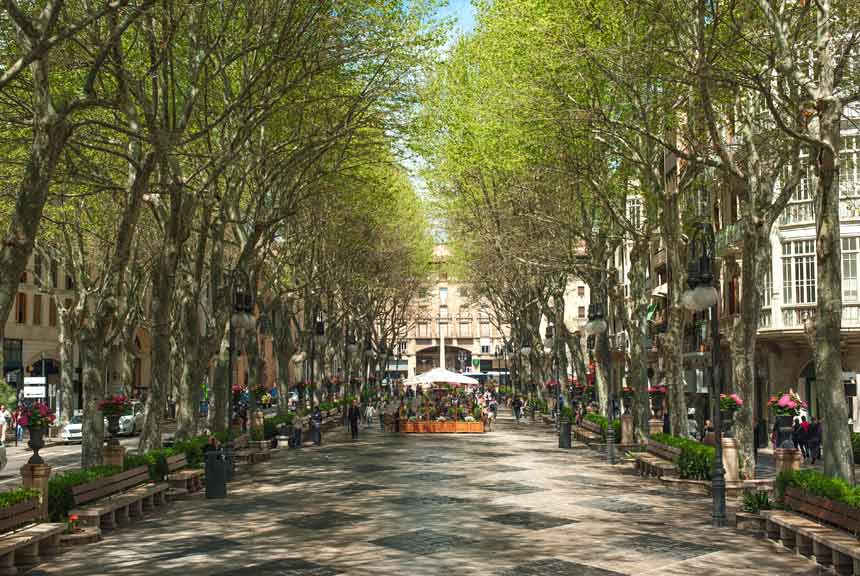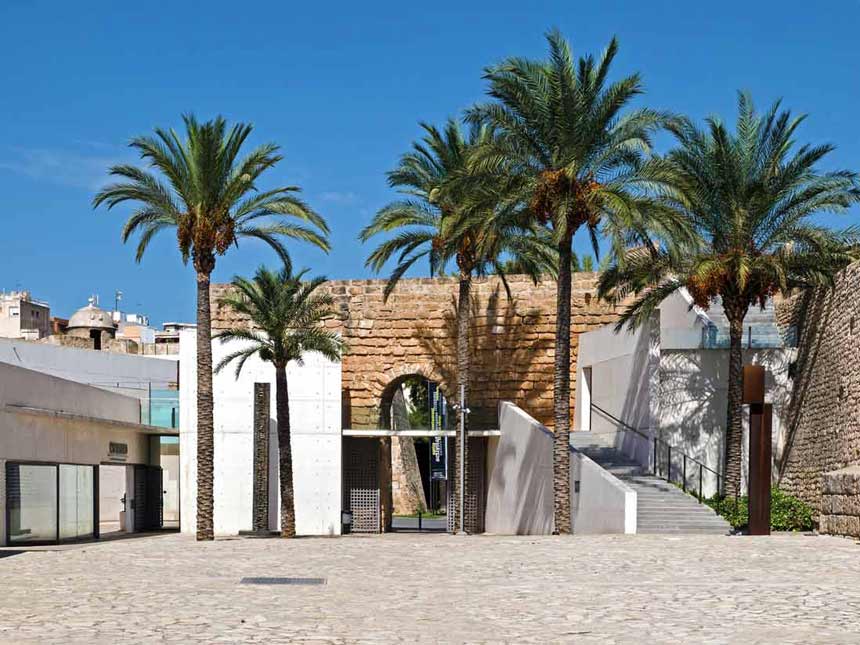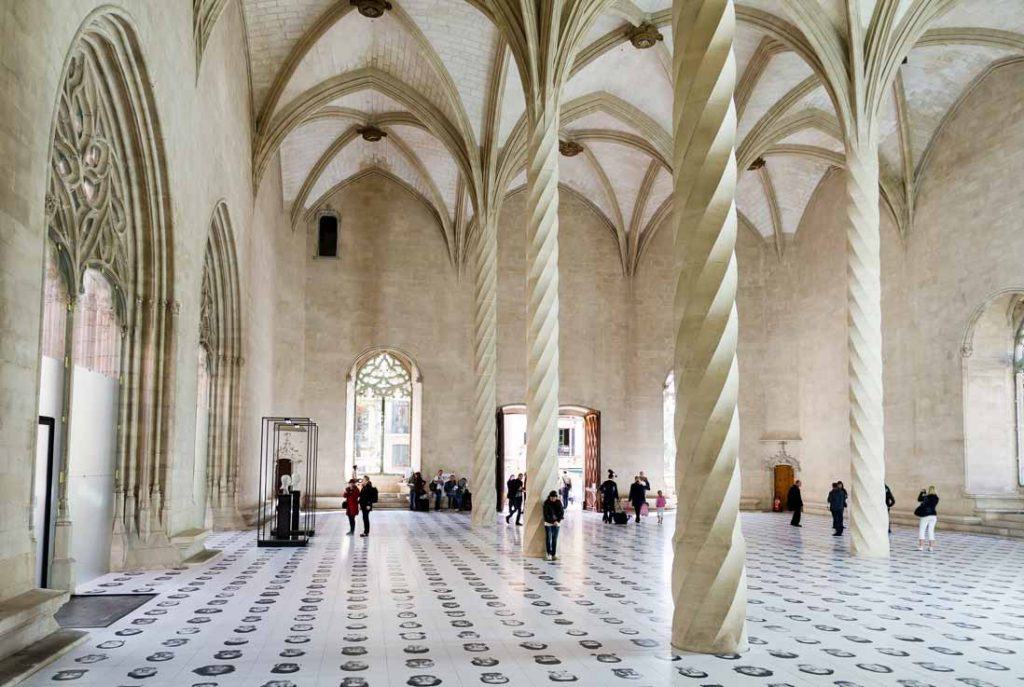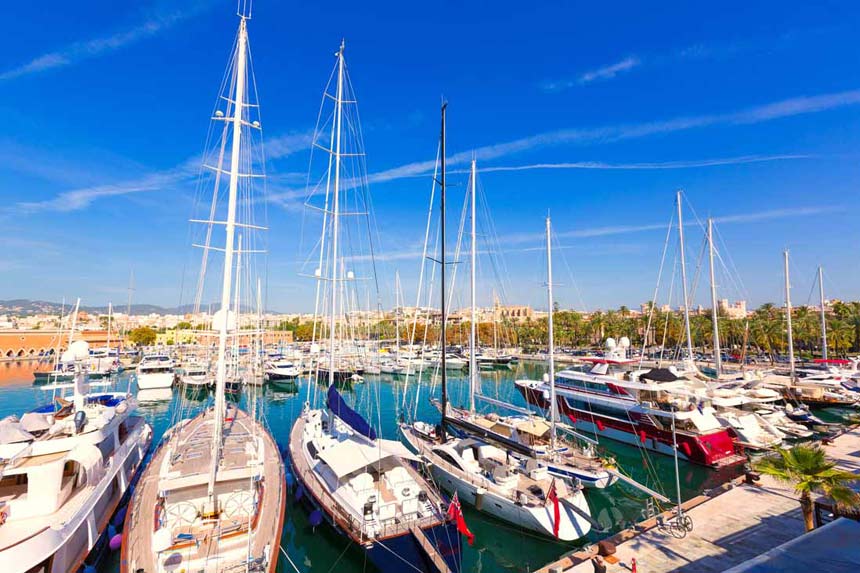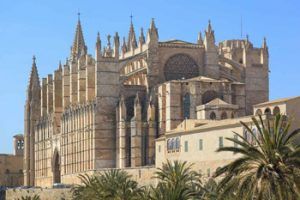The city of Palma has a lot to offer to visitors, so choosing one out of the 10 places is always a pain in the neck. Activities, historic neighborhoods, monuments, activities for the whole family or paradisiacal beaches are some of the attractions that you are going to find in this city. Discover our selection of Essential spots in Palma de Mallorca for an unforgettable trip.
Castell Bellver
Located 3 km from the center of Palma, on top of a mountain that bears the same name and surrounded by a lush pine forest, we find this architectural jewel which is almost unique in the world: Castillo de Bellver. A beautiful round castle. In the fourteenth century, King James II of Mallorca ordered the construction of this great castle that has a spectacular central courtyard with four towers of cylindrical shape. Throughout its many rooms we will discover a little more about the history of the castle and the city, as we enjoy the spectacular view.
Catedral de Palma
One of the essential cultural visits of Palma de Mallorca is this building, La Catedral de Palma known as La Seu, this is the jewel of the island and its most emblematic monument. Situated in the old town, it is the main exponent of the Levantine Gothic style of the fourteenth century, its beautiful silhouette reflects on the waters of the “Parc Sea” which is one of the most photographed images of the island. In its construction have employed important personalities like Gaudí or the Mallorcan artist Miquel Barceló. It is also important to mention that this monument has the world’s largest rose window.
El Palacio de la Almudaina
You cannot miss a visit to the Almudaina, next to the Cathedral; it’s the most important architectural ensemble of Palma de Mallorca. This building of Roman origin was taken from the Muslims by King James I of Aragon, and it became a symbol of the Christian Reconquista. This is a beautiful square building with very high walls and defensive towers. We recommend that you make a lovely journey through the different palatial rooms and courtyards to discover the splendor of the Palau Reial de l’Almudaina which witnessed the power and the Balearic history until today.
Molinos de Viento de Es Jonquet
One of the most representative images of Palma are the windmills overlooking the port by the sea. The barrio de Es Jonquetis one of the least known and most charming areas of the city. A captivating walk among humble houses, with narrow cobbled streets where the serenity of yesteryear is still breathed and you will definitely move back in time. Dominating the neighborhood on a cliff next to the port found are 5 flour windmills dating from the fourteenth century. One of the most photographed images of the port.
Aquarium
Palma Aquarium is a must stop for all tourists visiting the city. More than 50 aquariums that accomodates 8,000 marine specimens of 500 different species. Located in Calle Manuela de Herreros i Sorá 21, only 9 km from the center of Palma, found in this wonderful aquarium are different habitats and marine ecosystems. Places like the Mediterranean Sea, tropical seas, jungle, the gran azul or the fantástico medusario are some of the wonders that can be enjoyed.
Barrio Es Borne
Es Borne is one of the most commercial and liveliest city districts, that runs from the Plaza Juan Carlos I to the Plaza de la Reina and this place has great commercial and hotel operations. After a lovely walk here you will discover many stores of large firms and countless Barres, terraces and restaurants.
Museo de Arte español Contemporáneo Fundación March
This Museum offers a large collection of works of significant authors of Spanish arts in the twentieth century; significant authors of the early avant-garde including: (Pablo Picasso, Joan Miró, Juan Gris or Salvador Dalí). This museum is located in a XVII century building, which was built originally as an old manor house of Calle San Miguel street, in the old town of Palma. It houses part of the collection of the Fundación Juan March since 1990.
La Lonja
La Lonja fish market, located in the seaport a few steps from the Almudaina, is an architectural marvel and one of the most emblematic buildings of the city. The building was used by the merchants to carry out all kinds of transactions and business dealings when the island of Mallorca was one of the top destinations in the world trade routes. Today the fish market opens only sporadically for exhibitions, but it is worth a “walk through”. The Barrio de la Lonja neighborhood is full of cafes, terraces and restaurants of all kinds. This will be one of the essential places to visit in Palma de Mallorca for those looking for nightlife, as there are many clubs and it has a great atmosphere.
Puerto de Palma
This port is one of the liveliest areas of the city, this is a place where all the nightlife of Palma is concentrated. We will find a number of restaurants, terraces, bars and big clubs; here. Palma has a fantastic promenade that runs along the bay in its urban; that is 5 km in length, and an ample amount of palm trees, full mooring of pleasure boats and large cruise ships arriving the port; filled with tourists, which contrast with the traditional fishing activity that take place in the port.
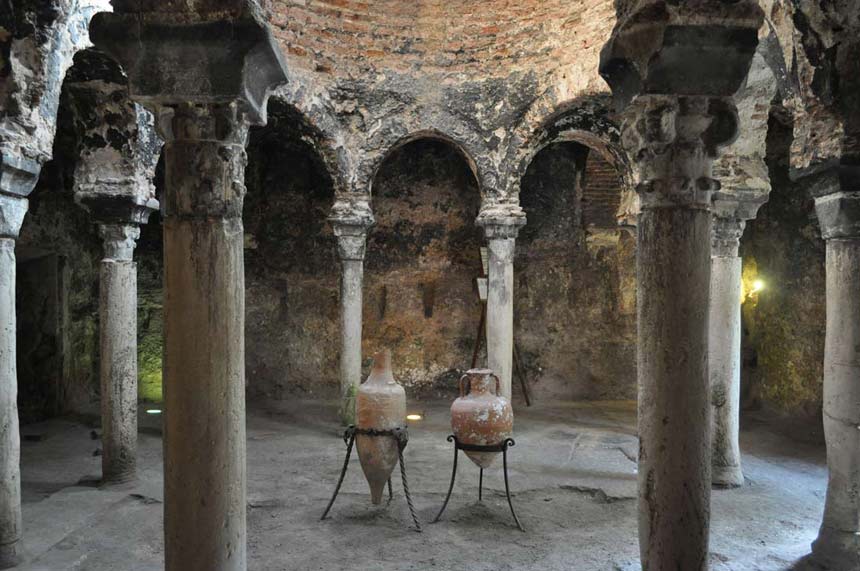
Arab baths
The Arab baths are a nice place to visit in the center of Palma on calle Can Serra n 7. It is a landmark building of the Muslim era, with beautiful gardens and rooms where for centuries; the Arabs were given hot baths and performed body worship. A good place to enjoy the architecture of old times.

